The Esquiline is a district in the historic center of Rome whose etymology comes from the ancient castra priora equitum singularium , that is, the headquarters of the Equites Singulares Augusti (imperial guard on horseback), which was located on the neighboring Celio hill.
In ancient times it was an area next to the Servian wall that housed a garbage dump and a cemetery for the poor until the urban reforms of Augustus completely transformed it, making it the place where the Horti Maecenatis were located. , a splendid garden villa owned by the famous Maecenas.
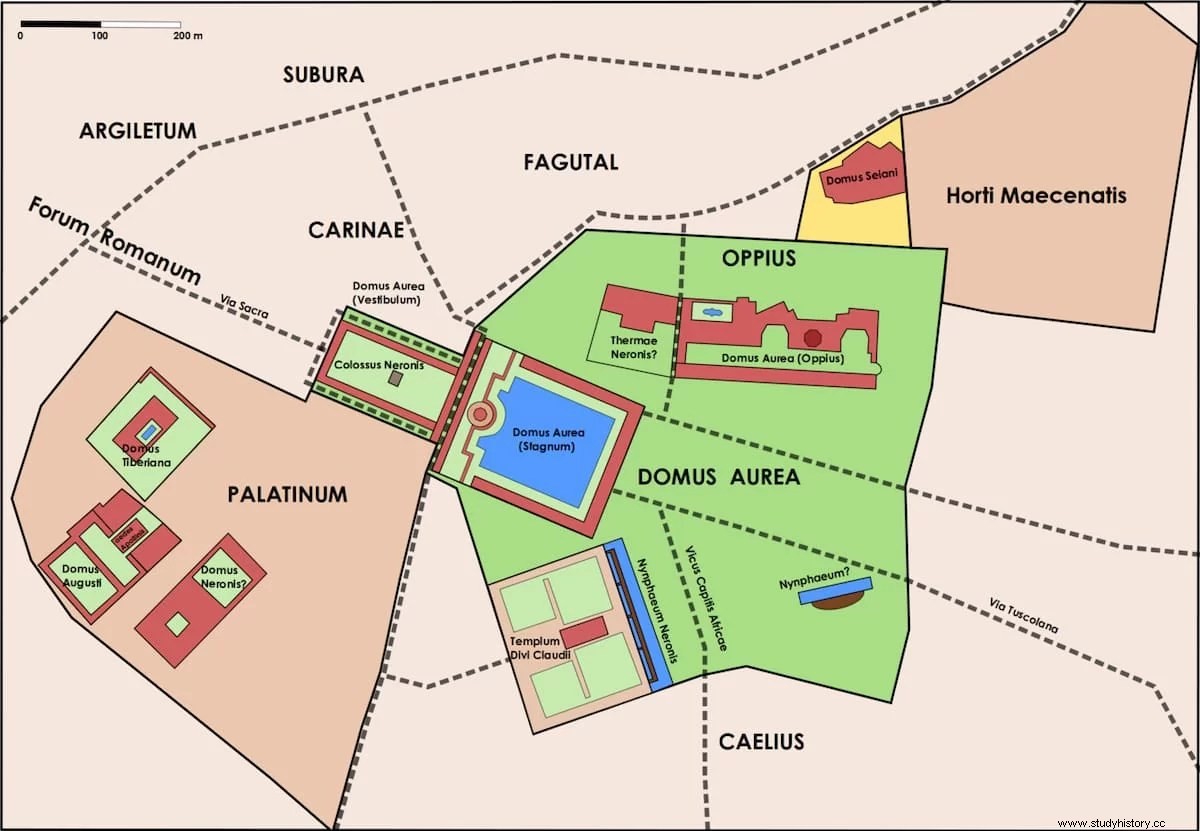
These beautiful stanzas of Horace in his Satires capture the rebirth of that Roman corner thanks to the hand of Cayo Clinio Maecenas, adviser and personal friend of the emperor as well as godfather of numerous writers and artists -among them Virgil, Propertius and Horace himself-, the latter being what served him to perpetuate its name:from it derives the concept of patronage that the RAE defines as «protection or help given to a cultural, artistic or scientific activity» . He himself dared to try himself in literature, both in prose and in verse, although he was heavily criticized for his elaborate style.
In fact, Maecenas was seen from a double perspective. One, positive, was his undoubted management skills and the cordiality with which he treated his circle of friends. Another, negative, the elitist exclusivity of said circle and a lack of martiality in his gestures that made him have a reputation for being effeminate. In addition, he rejected the offer to be a senator, preferring to remain in the equestrian ordo, something difficult for the Romans to understand, and on top of that he ended up falling out of favor with Augustus due to the involvement of his brother-in-law, Lucius Licinius Varro Murena, in a conspiracy (although Dio Cassius attributes this break to an alleged attempt by the emperor to seduce his wife), despite which he bequeathed his assets to his old friend when he died.
In 38 BC, the Senate prohibited the cremation of bodies less than two miles from the urban area, forcing the aforementioned Esquiline necropolis to be closed. The land passed into the hands of Maecenas, who decided to build a private recreational villa there following the fashion of the time:an architectural complex surrounded by gardens and wooded areas. There were several pavilions for various uses (residence, library, stables, a dovecote...) which, according to the analyzes carried out on the opus reticulatum (brick), must have been finished before 30 B.C. Each building had views of the surrounding wooded areas through a series of arches and terraces.
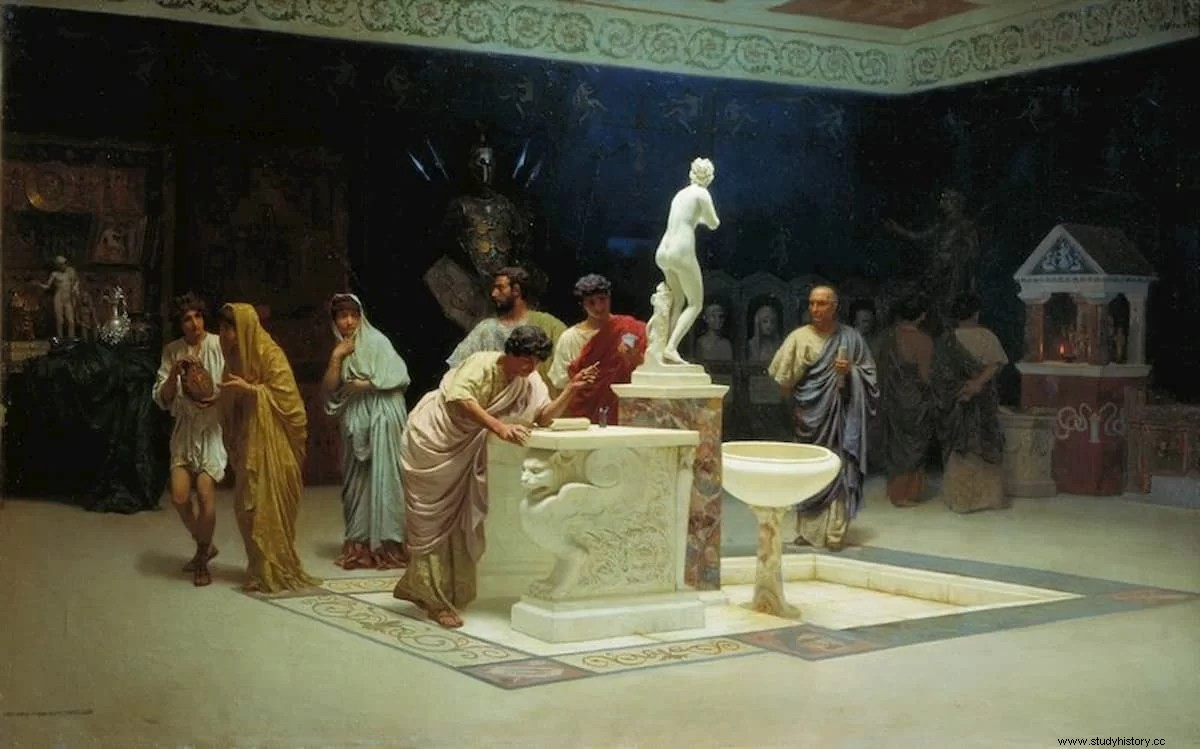
There were also some baths fed by the Aqua Marcia, one of the four largest aqueducts of the eleven that supplied Rome. It is said that Maecenas thus had the first private hot water bath in the city, a curious thing because the waters brought by the Aqua Marcia were famous precisely for being cold, coming from the Anio valley. Consequently, the Horti Maecenatis they could boast of a good number of marble fountains that embellished the whole, decorated with faunal statues.
And it is that the Roman recreational villas followed a characteristic model that tried to combine two apparently different concepts, such as the well-kept garden and the one that imitates wild nature. That is to say, Hellenistic-Persian type, imported from the Eastern Mediterranean and designed to invite relaxation, with some usual elements:use of light, shadows to placate the sun, importance of visible water and connection of interiors and exteriors through arches. and pilasters. Propertius confirms all this in his work Elegiae in Maecenatem .
The exact extent of the Horti Maecenatis is not known. . Archaeologists believe they were on both sides of the agger (defensive embankment) of the Servian wall (the one built by King Servius Tullius in the 4th century BC), north and south of the Porta Esquilina, because puticuli have been found (common graves) of the old necropolis in the northwest corner of Piazza Vittorio Emanuele I (outside the walls). Therefore, the limit would be in the neighbors Horti Lamiani (gardens built by the consul Lucio Anneo Lamia in the time of Tiberius).
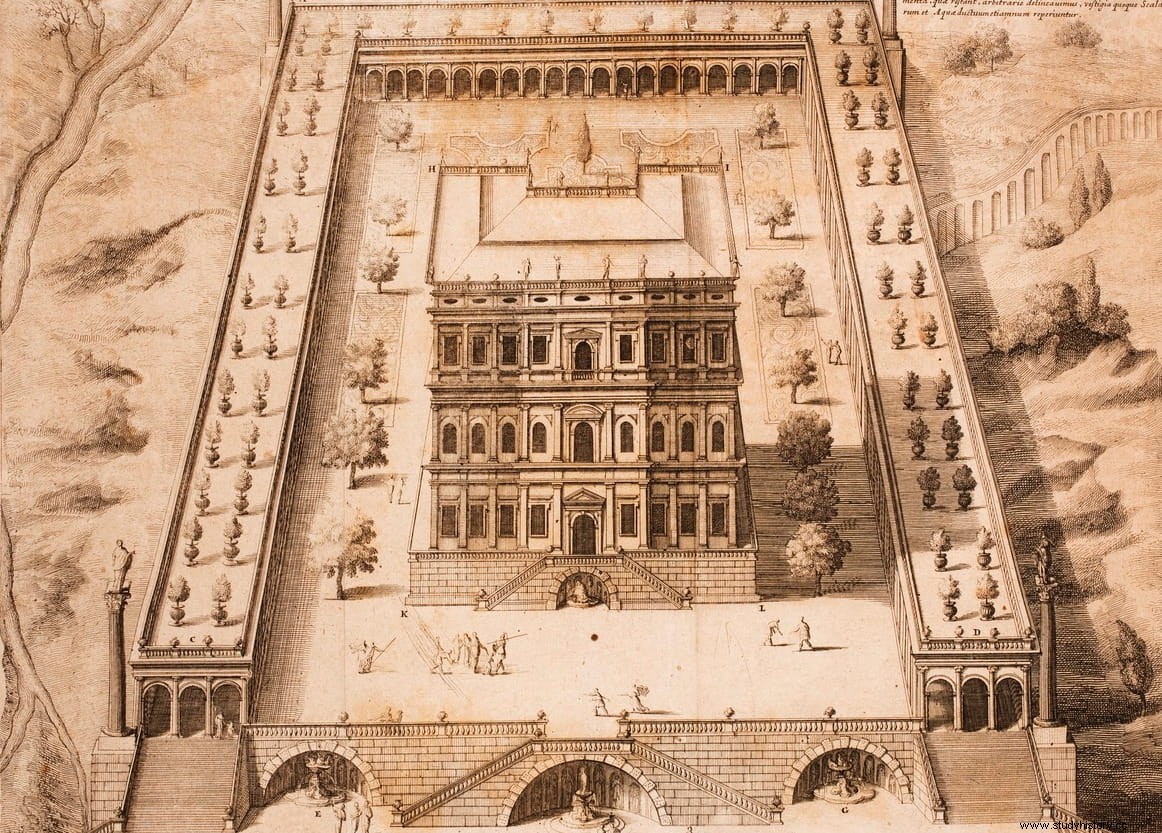
Augustus, who used to visit the place and spend the night at the house of his friend, did not want the previous funerary use to be forgotten and later he would order some Attic stelae to be placed as a reminder. After all, we said, he was the heir to that property when its owner died in the year 8 BC. and then went to state. Nero built the so-called Domus Transitoria, the first imperial palace erected after the famous fire of Rome, to connect the Horti Maecenatis with the Palatine; by the way, tradition says that the emperor saw the destruction caused by the flames from a turris (watchtower) of the village.
At that time, from his Stoic perspective, Seneca had contempt for the Horti Maecenatis as a symbol of spiritual decadence. But one thing was what the philosophers thought and another what the wealthy classes did; the consul Marcus Cornelius Fronton bought the gardens in the mid-2nd century AD. because he was an admirer of Horacio and remembered his glosses on them, which must have influenced him to dedicate a reference to them at some point and, in fact, his name has been found in a fistula aquaria (pipe) that passes through the Auditorium of Maecenas.
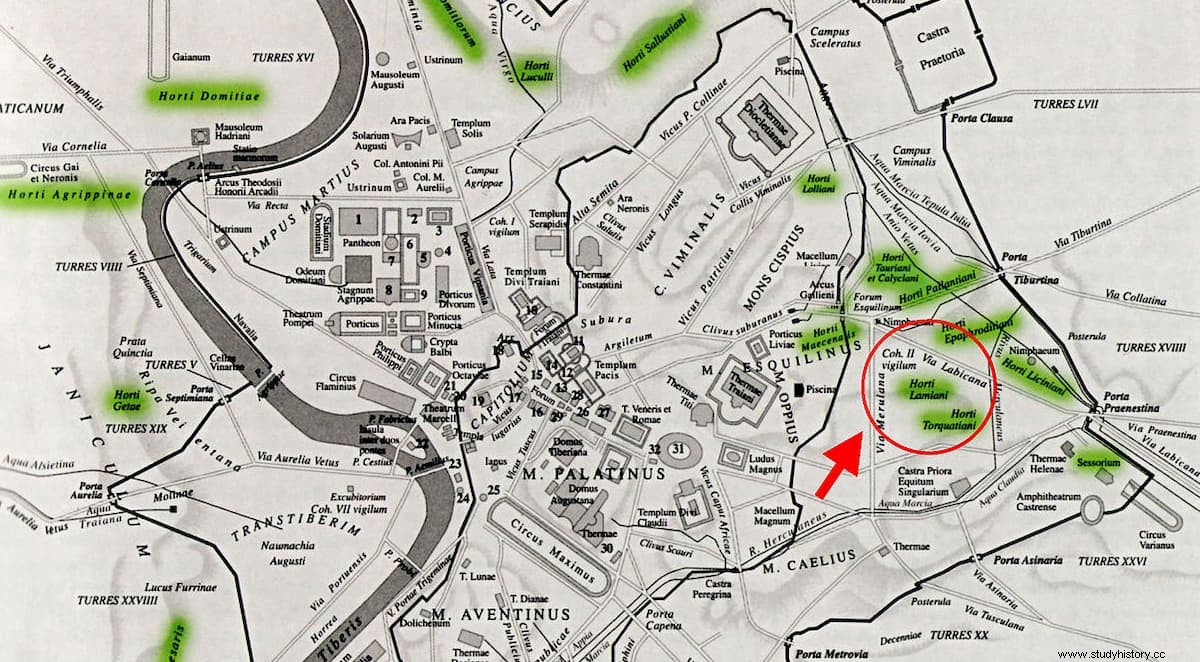
The Auditorium of Maecenas is the only monumental remains of the Horti Maecenatis and the first archaeological discovery of that place, in 1874. It is a triclinium, that is, a dining room, which constitutes the interior of a pavilion where the existence of these pipes -there are actually nine- leads us to deduce that it had interior fountains .
Decorated with niches and wall paintings depicting Dionysian mysteries, it probably had seasonal functions, now as a nymphaeum, now as an ekklesyasterion , pray as a triclinium proper.
Likewise, on the route of the ancient Via Labicana there was a late republican Roman sepulcher known as Casa Tonda (Round House) and traditionally considered the mausoleum of Maecenas; It is possible, although it is impossible to prove it because it was demolished in 1886 to open the aforementioned Vittorio Emanuele I square and only the foundations remain. It is something that other buildings once went through, whose stone was reused as a construction material.
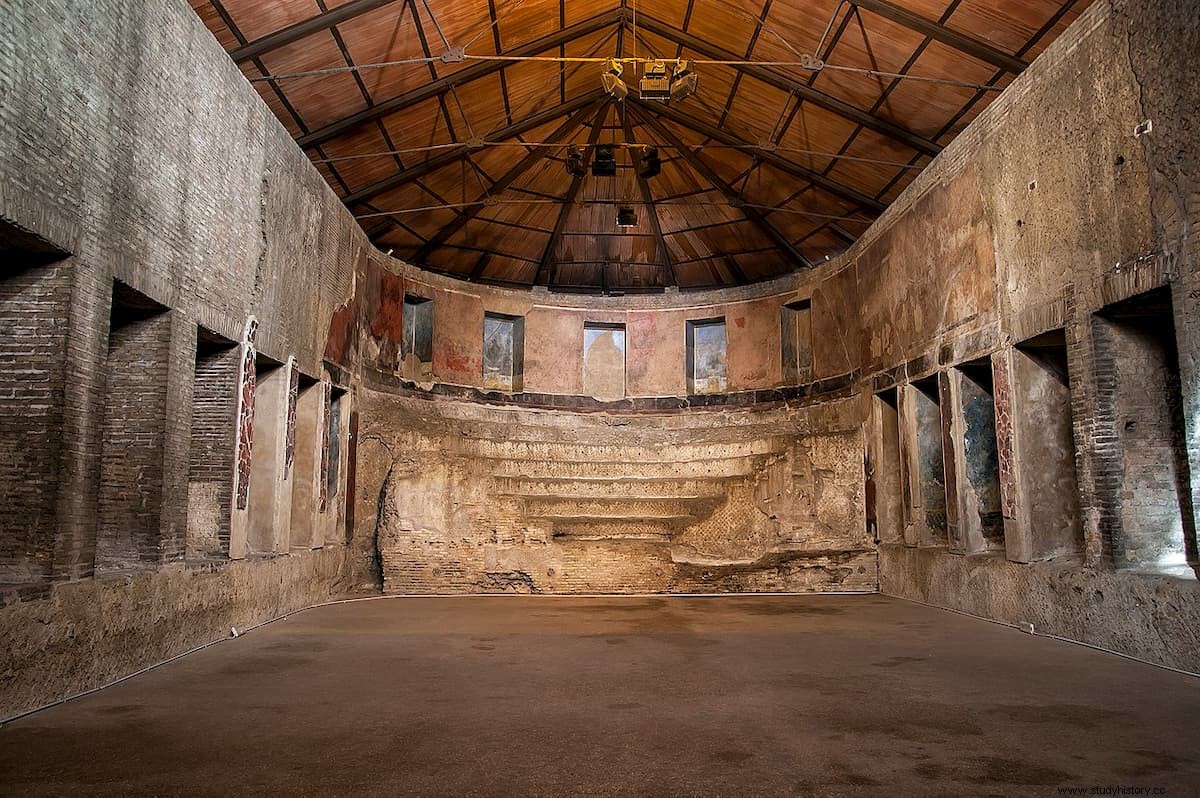
The sculptures themselves suffered, despite which some are preserved in the Capitoline Museums, highlighting, among others, the statues of Marsyas, Igea and Eros, the head of an Amazon, the so-called Auriga dell'Esquilino, a mosaic illustrating the story of Orestes and Iphigenia and an imposing Greek rhyton (horn for drinking or making libations) that comes from a fountain.
